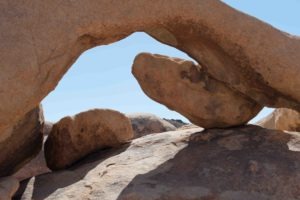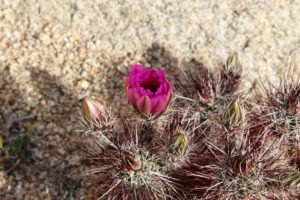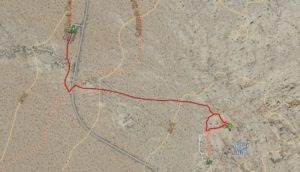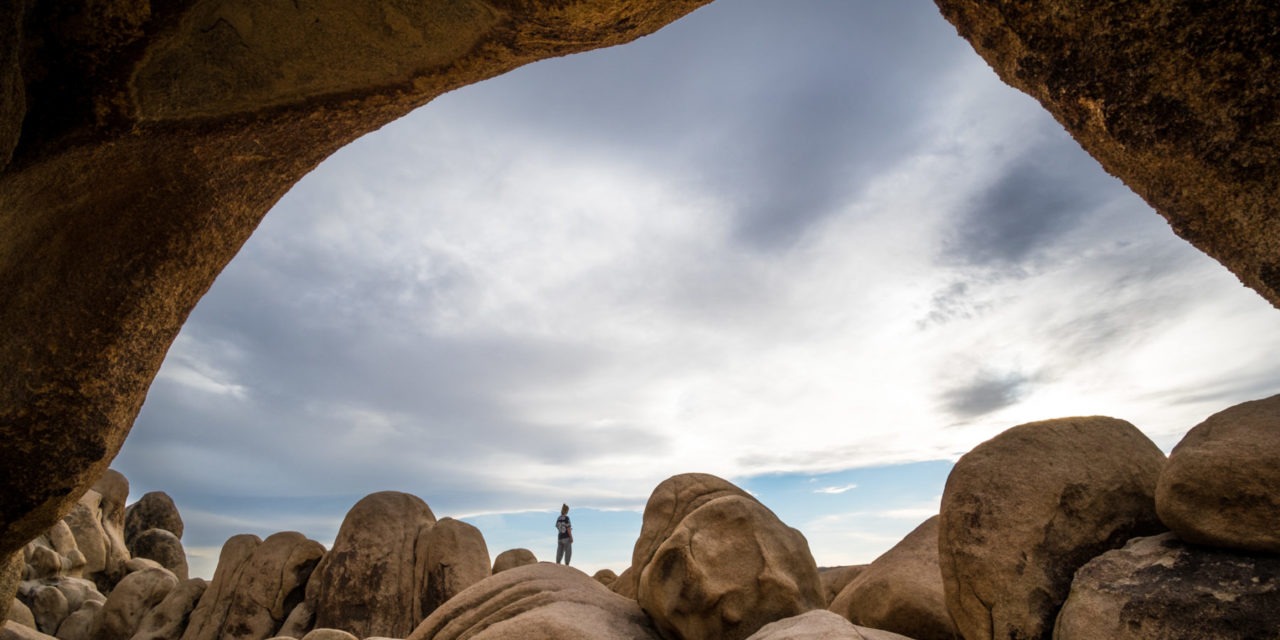Thanks to the coronavirus, hiking spots are difficult to find these days in and around the Coachella Valley. Joshua Tree National Park, Coachella Valley Preserve, the Santa Rosa and San Jacinto Mountains National Monument and most other local parks and nature preserves all are closed, and for good reason.
We still can plan future hiking trips, though. Here’s one local route that even if there were no coronavirus you wouldn’t do until autumn when temperatures cool down…
Day hikers can head to an arch sculpted by Mother Nature out of granite at Joshua Tree National Park.

Arch Rock spans 30 feet in Joshua Tree National Park.
The 1.3-mile lollipop Arch Rock Trail partially explores the granite rock formations surrounding the park’s White Tank Campground.
To reach the trailhead, from the park’s Oasis Visitor Center on Utah Trail just south of Calif. Hwy. 62, take the former south. Once in the park, Utah Trail becomes Park Boulevard. Turn left/southeast onto Pinto Basin Road. In about 2.2 miles, look for a parking lot on the road’s right/west side. Park in the lot.
The trail leaves from the lot’s south side, crossing desert as paralleling Pinto Basin Road. During spring, especially after a rainfall, wildflowers bloom along the trail. A variety of cacti can be seen year around.
At 0.15 miles, the route junctions with the California Riding and Hiking Trail. Go left/east onto the new trail and cross Pinto Basin Road. After doing so, turn right/southeast onto the Arch Rock Trail.
The trail gently descends on its way to White Tank Campground.

A cactus blooms after a March rainfall along the Arch Rock Trail.
At 0.55 miles in, the route reaches its loop portion. Go right/southwest onto the loop. Two other trails branch off the loop, both to the campground. The second of those branches also is named Arch Rock Trail, for the convenience of campers. Don’t turn onto the branching trails but stay on the loop.
The third branching trail, at about 0.67 miles in, is a stem leading to Arch rock. Turn right/southeast onto it.
You’ll be treated a side view of Arch Rock, which spans about 30 feet across. Taking a few steps off the main trail allows you to get underneath it, and the surrounding rocks can be climbed so you can touch the arch.
The rocks here are White Tank Granite and composed of three types of minerals. The clear, glass-like rock is quartz, the milky white mineral is feldspar, and the flaky black stone is biotite.
They formed between 135-155 million years ago when magma pushed up into the overlying rock then cooled and hardened. Since then, the overlying rock has eroded away, exposing the granite. Once above ground, rain and wind eroded a hole within the rock slab while rounding its top, resulting in an arch.
There are several other granite arches in Joshua Tree National Park, but none are as dramatic as this one.

Arch Rock Nature Trail map
After taking in the arch, head back on the stem trail to the loop. Go right/northeast onto it. The next branching trail is where you began the loop; go right/northeast onto the branching trail and retrace your steps back to the parking lot.
If staying at the campground, instead head from your campsite onto the 0.3-mile Arch Rock Trail to the loop. Go right/east onto the loop and take the next branching trail right/southeast to Arch Rock.
The entire trail is open to sunlight, so always don sunscreen, sunglasses and sunhat as well as carry plenty of water. Rattlesnakes and scorpions sometimes like to rest in rock crevices, so be careful where placing your hands if climbing on the rocks. Some rocks also can be too slippery for young children to climb, so exercise caution.
Image Sources
- 01 Arch Rock spans 30 feet in Joshua Tree National Park.: Rob Bignell
- 03 A cactus blooms after a March rainfall along the Arch Rock Trail.: Rob Bignell
- 02 Arch Rock is safe to clamber around and under. The effort is worth it just for the view from inside the arch.: Rob Bignell







